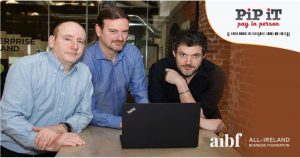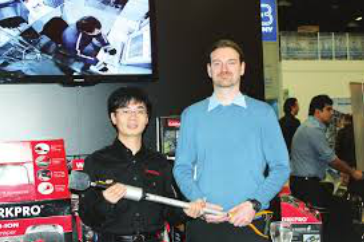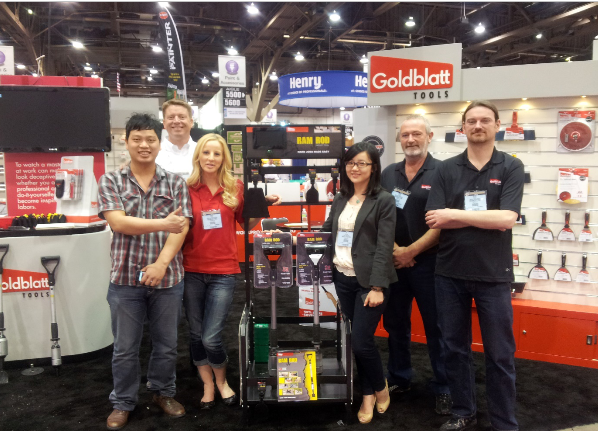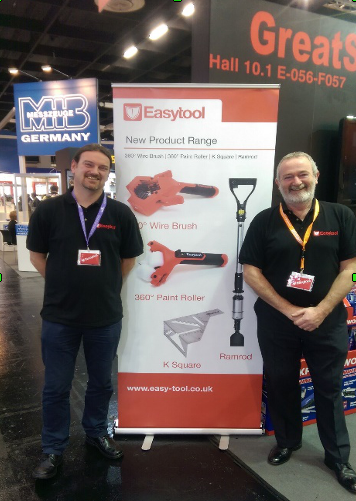Paul built all the design, building the prototype and testing it and I did extensive research and planning around target markets (globally), price points, distribution strategies, market entry strategies, brand strategy etc.
Once we had applied for the patent and had our priority date (the date of the claim of the patent), we exhibited at the major golf shows (Munich and Orlando) and found a manufacturing partner in Taiwan. They made test versions which they sent to us and we extensively tested the functionality of what we were now calling the ‘Air-Glide System’. It worked perfectly and was robust. We didn’t test the rest of the trolley as it was one of the manufactures biggest selling models.
We ordered 1000 units and sold them through a distributor in Ireland. All 1000 sold out in ten days. For a brand-new product concept, from an unknown brand, launched with almost no marketing, it was amazing. Then the first one came back with a wheel broken off. Then the second. Within a month about 80% of them came back with the wheels broken off. Our manufacturing partner immediately offered to refund us, but the brand was destroyed in the Irish market.
We decided to keep going and find a new manufacturer and this time to get a brand to take it on and sell it.
The following year at Orlando show one of the top five golf brands in the world agreed to licence it exclusively worldwide. A massive win for us. Cigars were smoked! The Air-Glide would go into their following years catalogue (the shows were for products a year in advance), all we had to do was wait.
As the time neared to go into production, the brand replaced their Head of Product. His first decision was to discontinue their full golf trolley line and focus on their other products. Not only had we lost a massive deal, but we had lost a year of time where we still had to pay the patents. It was an expensive year.
We persevered.
The next year at the Munich show we secured a partner who was one of Europe’s biggest distributors of golf products. Another massive win! More cigars!
We spent days with them in their UK offices working on launch and marketing strategies as well as product development. The meetings were very positive with our partners enthusiastic about the potential for the Air-Glide.
Soon after, they went quiet. No replies to emails. No answered phone calls or returned messages. Then we discovered the company had gone into liquidation. We couldn’t believe it. Another amazing opportunity, gone.
We regrouped. Decided to do one more trade show. Back to Orlando for the golf show. We met with a range of companies over a few days and came out with heads of terms with a big North American brand. More cigars!
We spent a week with them in their Canada office planning. It was an exciting time as they had huge plans for the Air-Glide. They ordered their first container full. It was really happening this time!
After a few months of them not selling any, we started to get concerned. They tried to reassure us this was the sales cycle, but we knew that it wasn’t.
In the years we had been working on the Air-Glide, the market changed and push carts – which didn’t exist when we started with the Air-Glide, now dominated the market. Retailers were not interested in buying a pull cart.
This time we were out of road. The cost of maintaining patents and running the company meant we had to decide to wind it up.
This was a disaster.
Soon after, Paul had the idea for the RamRod. We started the whole process again in a different industry and kept going on our learning curve.
What did I learn from the Air-Glide experience?
In a product development business, patent your idea as late as possible. There is a fine line here as you obviously need to be careful of the idea getting out, but the cost of a patent rapidly scales up. The first year will cost €1000. No problem – gets you a ‘priority date’ meaning you can start showing it to people. The next 18 months will cost €7-10,000 – real money now. This is the PCT (Patent Cooperation Treaty) phase which gives you global protection for the period. So, around €10,000 will protect your idea for 30 months. What I have learned is getting a product to revenue, takes a lot longer than that. Once PCT is finished, you will then have to pay patent fees for each country you want the product patented in. Depending on how many countries you pick, you are now into the €100,000 a year range. (Click here for short blog I wrote on the Fidget Spinner patent)
I also learned about the reality of the sales cycle when dealing with major brands and product development. The trade shows I attended in Orlando and Munich, were showcasing products that were not available for retail until the following season – 12 months later. The show was to take orders which were then manufactured and delivered. When we met buyers at the show, they were buying ideas/products that would not be available for an exhibition till the following year, so when we got a buyer interested, it was going to be a minimum of 2 years before a product would be on a shelf. The potential for that buyer/our champion to leave in that time frame was very high. As this time goes by, you are paying for patents…




